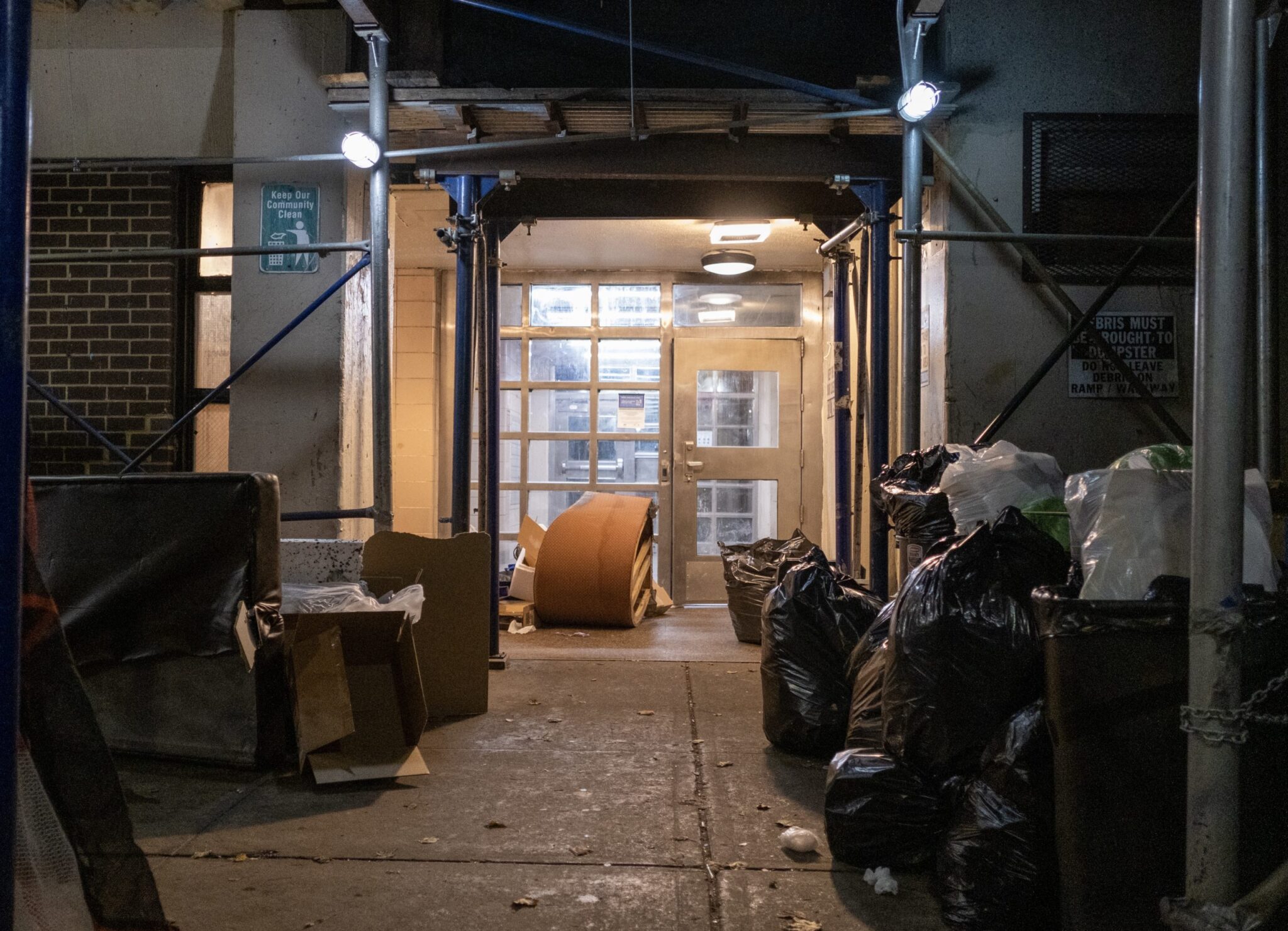Photo by Natalia Gonzalez
“I think it’s more important now than ever to bring the community together because people are literally fighting for their communities,” Osheena Smith, a member of the Harlem Art Collective, said. She is referring to the creeping gentrification in Harlem that displaces long-time residents and businesses. In recent years, several downtown art galleries have relocated to Harlem and turned it in to a destination for gallerygoers. Some see this as culturally enriching. But others see the growing presence of white art dealers as a loss for artists of color and dealers who specialize in their work.
The Harlem Art Collective (HART) includes a small group of local artists and community members. Since 2015 they’ve used art as a tool to educate, unite, inspire, and empower East Harlem. Their Flagship project is the Guerrilla Gallery, an abandoned construction fence on 116th Street that the collective has transformed into an outdoor and interactive art installation. Some of their past exhibits have focused on issues ranging from gentrification, racism, women’s rights, and environmental justice. The latest project focuses on immigration and border policy issues.

Hart shares the same historical mission as artists in the Harlem Renaissance. It strives to uplift the community and address political issues. In the 1920s some of the most influential writers, poets, jazz musicians and artists flourished here. But the Harlem Renaissance was about more than art and music. It was also about civil rights and racial integration. The arts and politics reflected the emergence of a cohesive Black intellectual class. Now the influx of downtown galleries threatens to change the cultural emphasis in Harlem.
British art dealer Gavin Brown led the vanguard when he moved his gallery from the West Village to 127Street, next to The Studio Museum. The space Brown took over had been empty for 50 years and was formerly a brewery. Brown told The New York Times that the space reminded him of “an urban secular cathedral.” Brown strictly showcases well-established names such as Jasper Johns and Laura Owens.
In an interview with ARTnews, Brown said rising rents led him to move, although he hadn’t planned on moving his gallery Uptown. “But it soon became clear that there was nothing that wasn’t either already being developed or was stupid money. And in turning my head back uptown I came to realize that downtown—to use a generalized term—was filled with zombies. If the downtown of the collective imagination had been created by the artist, then in some ways downtown is now the artist’s corpse.”
His decision to move his gallery Uptown became a topic of conversation in the art world. Brown said, “This focus that is on Harlem feels a little strange to me. The subject is entirely based on real estate. It doesn’t touch on life or art. To talk about Harlem as a new, undiscovered art destination ignores the fact that, unlike SoHo in the ’60s or Chelsea in the early ’90s, this neighborhood has been a home, a community to generations. It also ignores that it has been a cultural epicenter for almost a century. But in New York a ‘new’ must always be found.”
But despite Brown’s protests about creating a new art community, other galleries followed and the New York Times published a “Gallery Guide” to Harlem and listed the “must visit” galleries. The list did not include long-time African-American and community-focused galleries. The long-established and internationally known Studio Museum, the Health Gallery and the Essie Green Gallery weren’t mentioned.
Essie Green Gallery specializes in African American Art and has been in the historic Sugar Hill area since 1989. Gallery president Sherman Edmiston is a highly respected dealer of Black master works. For three decades the Harlem native and City College graduate has represented African-American painters as well as works of Harlem Renaissance artists. When asked about how he felt about downtown galleries moving Uptown he said, “I’m glad to see it because the more galleries the better, for me.” He believes that the migration of these galleries to Harlem correlates with an increased interest in black artists and black art as a movement.
WhiteBox Gallery, another Chelsea and East Village transplant, relocated to East Harlem in 2017. The non-profit art space serves as a platform for contemporary artists. A recent group show featured female contemporary artists who work with textiles.
The wall text at the gallery reads, “During this exhibition, funds will be collected on a donation basis, and a portion of all artwork sales will go to support the programming of the Lower Eastside Girls Club.” It doesn’t say whether any portion of sales or donations will go to the East Harlem community, where the gallery is now located.
The white galleries’ march into Harlem infuriates some. Spike Lee said, “Why does it take an influx of white New Yorkers in the South Bronx, in Harlem…for the facilities to get better? Then comes the Christopher Columbus Syndrome. You can’t discover this! We been here.”
Tags: downtown galleries Harlem Essie Green Gallery Gavin Brown Harlem Guerrilla Gallery Harlem Harlem Art Collective Harlem art scene Harlem galleries Natalia Gonzalez Sherman Edmiston White Box Gallery Harlem
Series: Harlem






